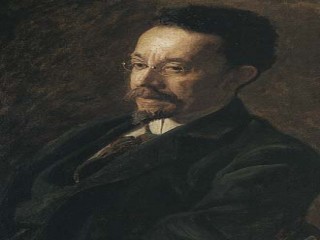
Henry O. Tanner biography
Date of birth : 1859-06-21
Date of death : 1937-05-25
Birthplace : Pittsburgh, Pennsylvania, U.S.
Nationality : African-American
Category : Famous Figures
Last modified : 2011-06-18
Credited as : Artist painter, Academie Julian in Paris, The Young Sabot
Henry O. Tanner was born in Pittsburgh, Pa., on June 21, 1859. His father, a clergyman, writer, and educator, moved the family to Philadelphia in 1866. After Henry graduated from high school, he secured a job in a flour mill; the work was strenuous, and he soon became seriously ill. With his recovery, Bishop Tanner consented to let him study art.
In 1880 Tanner began his studies at the Philadelphia Academy of Fine Arts, where his principal teachers were Thomas Eakins and William Merritt Chase. By 1882 Tanner was painting on his own, occasionally selling a painting or a drawing. In 1888 he set up a photography studio in Atlanta, Ga. The venture failed, but he secured a teaching position at Clark University in Atlanta.
At Clark, Tanner met Bishop Joseph L. Hartzell. The bishop, impressed with Tanner's artistic ability, arranged an exhibition in Cincinnati. Not one piece was sold, but the bishop bought them all to help the young artist—morally and financially. With this money Tanner left for Europe to work in an atmosphere free of the virulent racism that permeated American life.
After 5 years of study at the Academie Julian in Paris, Tanner showed the painting The Young Sabot-makerat the prestigious Salon des Artistes Francais. He participated continually in Salon exhibitions until 1924. In 1897 he became internationally known when the French government purchased the Resurrection of Lazarus.
The young woman who posed for the figure of Mary in the Annunciation (1898) became Tanner's wife in 1899. They returned to the United States in 1902. After their only child was born in New York City the next year, Tanner moved his family to Paris. Except for occasional visits to America, he remained abroad for the rest of his life.
The years brought numerous awards and honors, the most significant being Tanner's election in 1923 by the French government as a chevalier of the Legion d'Honneur. Later, America honored him with full membership in its National Academy of Art and Design. He was the first black American to achieve this distinction.
After his death in Paris on May 25, 1937, interest in Tanner's works diminished considerably. The most renowned of all black artists was rediscovered, largely as a result of a major exhibit in New York, in 1967. Two years later the Smithsonian Institution presented a large retrospective that circulated extensively throughout the United States.
Tanner was an excellent draftsman. Often compared to Eakins, he can be more accurately compared to Albert P. Ryder and Ralph Blakelock. Yet his work also relates to Rembrandt in terms of technique and composition, as clearly illustrated in Tanner's Daniel in the Lion's Den. Dramatic lighting made Tanner's paintings between 1890 and 1905 prime examples of modern chiaroscuro. His skillful use of glazing was a unique element of his style. Although his Banjo Lesson (1893) is considered a classic work of an ethnic subject, Tanner usually found his inspiration in landscapes and biblical themes.

















